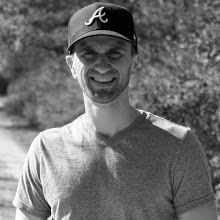Born to Run is a true story that centers around the Tarahumara Indians who live in western Mexico. This tribe is known for their unbelievable feats of running endurance. Wearing home made sandals as foot protection and fueled on lots of corn, they can run for distances of 100 or more miles without much difficulty.
Christopher McDougal travels to Mexico to see what they’re all about and to pick up tips that may help in his own running. During his travels, he encounters numerous “characters” including a man who calls himself Caballo Blanco. Caballo Blanco is an American who has lived among the Tarahumara for more than a decade and has incorporated endurance running into everything that he does.
After returning to America, McDougal stays in touch with Caballo Blanco who sets up an ultra race in the beautiful but desolate Mexican Copper Canyons where the Tarahumara live. His dream is to bring together American ultra marathoning great Scott Jurek, a number of other top ultra runners, and the Tarahumara who are regarded as some of the most incredible endurance athletes ever. McDougal helps organize the American side of the race and brings about 10 other runners with him.
One of the runners is called Barefoot Ted who virtually always runs barefoot or with minimal foot covering. He provides an interesting foil to Caballo Blanco, both being unique characters in their own right.
The book makes a strong case for the benefits of barefoot running and the possibility that running shoes may actually cause more injuries than they prevent. They also discuss something called the Running Man theory that postulates all humans were created to be runners and discusses group endurance hunts. These endurance hunts involved running after prey and keeping at it until the animal died of exhaustion. While humans are not nearly the fastest animal on the planet, we have greater endurance than a vast majority. For example, given enough time and distance, a man can outrun a horse.
McDougal’s journalism background shows throughout the book as we see vignettes telling individual character stories that feed into the overall narrative of the Tarahumara and culminating in the race. He delves into the science behind running as well as telling interesting background stories for each of the people represented in the book. He clearly performed a great deal of research when writing the book.
His writing style is funny, engaging, and off the cuff. There are a few spots where the language can get a little rough and a few scenes are described in a bit more detail than is needed. He does discuss macro-evolution as fact but if taken with a grain of salt, the perspective is still interesting as it relates to running. These elements do not overly denigrate an otherwise fascinating and fun story. I thoroughly enjoyed the book and recommend it to anyone interested in running, geography, or just a plain good story. Incidentally, if any movie producers are looking for a good potential movie, this would make a great story with a full cast of characters.
If you found this review helpful, please let Amazon know

